-
 Bitcoin
Bitcoin $115100
-2.99% -
 Ethereum
Ethereum $3642
-1.38% -
 XRP
XRP $3.027
-5.51% -
 Tether USDt
Tether USDt $1.000
-0.05% -
 BNB
BNB $763.4
-1.32% -
 Solana
Solana $177.2
-5.42% -
 USDC
USDC $0.9999
-0.02% -
 Dogecoin
Dogecoin $0.2247
-6.47% -
 TRON
TRON $0.3135
0.23% -
 Cardano
Cardano $0.7824
-4.46% -
 Hyperliquid
Hyperliquid $42.53
-0.97% -
 Stellar
Stellar $0.4096
-6.09% -
 Sui
Sui $3.662
-2.61% -
 Chainlink
Chainlink $17.63
-3.57% -
 Bitcoin Cash
Bitcoin Cash $536.3
2.94% -
 Hedera
Hedera $0.2450
0.34% -
 Avalanche
Avalanche $23.23
-3.15% -
 Litecoin
Litecoin $112.2
-1.23% -
 UNUS SED LEO
UNUS SED LEO $8.976
-0.30% -
 Shiba Inu
Shiba Inu $0.00001341
-2.72% -
 Toncoin
Toncoin $3.101
-2.44% -
 Ethena USDe
Ethena USDe $1.001
-0.05% -
 Uniswap
Uniswap $10.08
-1.97% -
 Polkadot
Polkadot $3.938
-2.77% -
 Monero
Monero $323.9
0.87% -
 Dai
Dai $0.9999
-0.02% -
 Bitget Token
Bitget Token $4.481
-1.69% -
 Pepe
Pepe $0.00001199
-5.94% -
 Aave
Aave $288.2
-0.68% -
 Cronos
Cronos $0.1279
0.36%
Buy signal after breaking through the neckline with large volume and then stepping back without breaking the head and shoulders bottom
The head and shoulders bottom pattern signals a bullish reversal when price breaks above the neckline on high volume and pulls back without breaking the head's low.
Jul 24, 2025 at 11:35 am
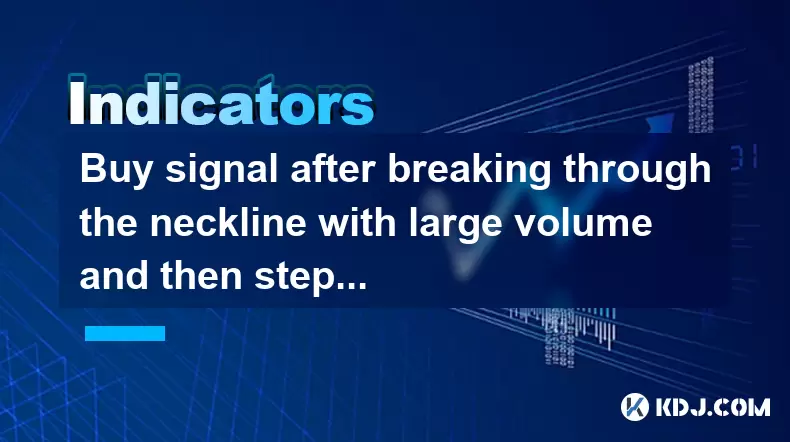
Understanding the Head and Shoulders Bottom Pattern
The head and shoulders bottom is a well-known reversal pattern in technical analysis, commonly observed in cryptocurrency price charts. This formation typically signals a shift from a downtrend to an uptrend. The structure consists of three troughs: the left shoulder, the head, and the right shoulder. The left shoulder forms during a downtrend and is followed by a rally. The head is the lowest point, indicating continued selling pressure, but the subsequent rebound is stronger. The right shoulder forms at a higher low than the head, showing weakening bearish momentum. The neckline is drawn by connecting the two reaction highs between the shoulders and the head. This line acts as a resistance level that must be broken for the pattern to confirm.
When analyzing this pattern in crypto markets, traders pay close attention to the symmetry and depth of the troughs. While perfect symmetry is rare, the overall structure should reflect diminishing selling pressure. The volume plays a crucial role in validating the pattern. Typically, volume declines during the formation of the head and increases significantly during the breakout above the neckline.
Significance of the Breakout with High Volume
A breakout above the neckline accompanied by large volume is a strong bullish signal. In cryptocurrency trading, volume confirms the conviction behind price movements. When the price breaks through the neckline on substantially higher volume, it suggests that buyers are entering the market aggressively, overpowering the previous sellers. This volume surge increases the reliability of the breakout and reduces the likelihood of a false move.
To identify this signal correctly, traders should:
- Confirm the breakout occurs above the neckline, not just a brief spike.
- Check that the volume during the breakout candle is significantly higher than the average volume over the past 10–20 periods.
- Use candlestick analysis to ensure the breakout candle closes above the neckline.
For example, on a BTC/USDT 4-hour chart, if the neckline is at $60,000 and the price closes at $61,500 on volume 2.5 times the 20-period average, this qualifies as a valid high-volume breakout. Such a move indicates strong accumulation and potential continuation upward.
Price Pullback Without Breaking the Head
After a breakout, it is common for the price to retrace or pull back toward the neckline. This retracement tests the strength of the breakout and whether the former resistance has turned into support. A healthy pullback occurs when the price dips close to the neckline but does not break below the head’s low. If the price remains above the head’s low, it confirms that bearish momentum has been fully exhausted.
Key characteristics of a valid pullback:
- The price touches or slightly retests the neckline.
- Volume during the pullback is lower than during the breakout.
- The low of the pullback candlesticks stays above the head’s lowest point.
- The price quickly resumes upward movement after the test.
In a scenario where the head formed at $57,000, the neckline at $60,000, and the breakout occurred at $61,500, a pullback to $59,800 that holds and bounces is acceptable. However, if the price drops below $57,000, the pattern is invalidated, and the bullish assumption must be reconsidered.
Confirming the Buy Signal with Additional Indicators
While the head and shoulders bottom with a high-volume breakout and a clean pullback is a strong signal, combining it with other technical tools enhances confidence. Traders often use:
- Moving averages: A breakout above the 50-period or 200-period EMA adds confirmation.
- RSI (Relative Strength Index): An RSI crossing above 50 after being oversold supports bullish momentum.
- MACD (Moving Average Convergence Divergence): A bullish MACD crossover coinciding with the breakout reinforces the signal.
For instance, if the MACD line crosses above the signal line at the same time the price breaks the neckline, and the RSI moves from 35 to 55, this confluence strengthens the buy case. Additionally, placing a stop-loss just below the head’s low protects against false breakouts. A take-profit target can be estimated by measuring the distance from the head to the neckline and projecting it upward from the breakout point.
Step-by-Step Trading Strategy Based on the Pattern
To trade this setup effectively, follow these steps:
- Identify the completed head and shoulders bottom pattern on a crypto chart.
- Draw the neckline by connecting the two swing highs.
- Wait for a candle to close above the neckline with volume at least 1.5 times the average.
- Observe the next few candles for a pullback that does not breach the head’s low.
- Enter a long position when the price bounces from the neckline support with rising volume.
- Place a stop-loss order slightly below the lowest point of the head.
- Set a take-profit level equal to the vertical distance from the head to the neckline, added to the breakout price.
For example, if the head is at $45,000 and the neckline at $48,000, the projected target is $51,000 ($48,000 + $3,000). This method provides a risk-defined entry with a favorable risk-reward ratio.
Common Pitfalls and How to Avoid Them
Traders often misinterpret incomplete patterns or act on premature breakouts. To avoid false signals:
- Do not assume the pattern is complete until the right shoulder forms and the neckline is tested.
- Avoid entering on a wick above the neckline if the candle closes below it.
- Be cautious if volume during the breakout is weak or declining.
- Watch for extended right shoulders, which may indicate indecision rather than reversal.
Another mistake is ignoring the broader market context. A head and shoulders bottom on a small-cap altcoin may fail if Bitcoin is in a strong downtrend. Always assess the dominant trend in Bitcoin or Ethereum, as they often influence the entire crypto market.
Frequently Asked Questions
Can the head and shoulders bottom appear on different timeframes?
Yes, this pattern can form on any timeframe, from 1-minute charts to weekly charts. However, breakouts on higher timeframes like daily or weekly carry more weight and are considered more reliable due to greater participation and volume.
What if the pullback breaks the neckline but stays above the head?
A minor breach of the neckline may still be acceptable if volume is low and the price quickly recovers. The key level is the head’s low—as long as that holds, the pattern remains valid. Traders often allow a small buffer (e.g., 1–2%) below the neckline for market noise.
How long can the head and shoulders bottom formation take to develop?
The duration varies. In daily charts, it may take 1 to 3 months. On lower timeframes like 1-hour charts, it could form in under a week. The longer the formation, the more significant the potential move after breakout.
Is it necessary for the shoulders to be symmetrical?
No, symmetry is not required. The left and right shoulders can differ in height and width. The critical factor is the sequence of lower low (head) between two higher lows (shoulders) and the neckline breakout with volume.
Disclaimer:info@kdj.com
The information provided is not trading advice. kdj.com does not assume any responsibility for any investments made based on the information provided in this article. Cryptocurrencies are highly volatile and it is highly recommended that you invest with caution after thorough research!
If you believe that the content used on this website infringes your copyright, please contact us immediately (info@kdj.com) and we will delete it promptly.
- Kiyosaki's Crypto Playbook: Ditching Paper for Real Assets Like Bitcoin
- 2025-07-25 22:30:11
- Satoshi-Era Whales Stir the Bitcoin Pot: What's the Deal?
- 2025-07-25 22:30:12
- Pi Coin Value in Indian Rupees (INR) 2024: Decoding the Hype
- 2025-07-25 21:45:50
- Crypto Investing: Top Picks and Meme Coin Mania in '25
- 2025-07-25 21:52:07
- Ark Invest's Portfolio Rebalance: Coinbase, Block, and the Crypto Shift
- 2025-07-25 21:52:07
- Bitcoin's Wild Ride: Sell-offs, Volatility, and What's Next
- 2025-07-25 21:55:18
Related knowledge

How to interpret that the KDJ D line is downward for a long time but the price is sideways?
Jul 25,2025 at 07:00pm
Understanding the KDJ Indicator and Its ComponentsThe KDJ indicator is a momentum oscillator widely used in cryptocurrency trading to assess overbough...

What does it mean that the KDJ indicator forms a double bottom at a low level?
Jul 25,2025 at 05:08pm
Understanding the KDJ Indicator in Cryptocurrency TradingThe KDJ indicator is a momentum oscillator widely used in cryptocurrency trading to identify ...
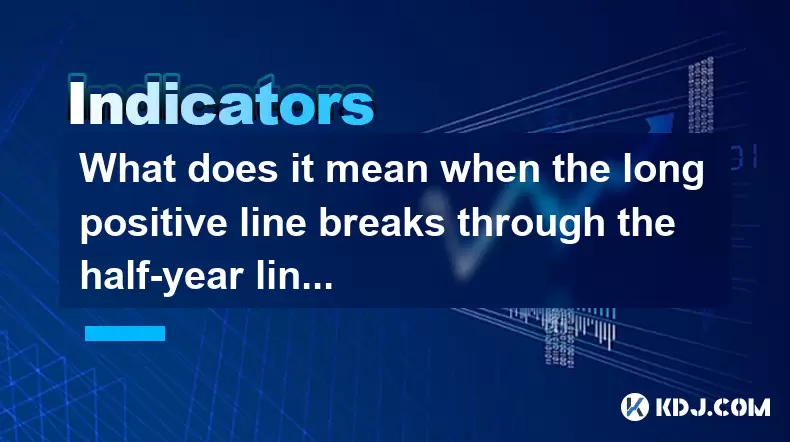
What does it mean when the long positive line breaks through the half-year line and then steps back?
Jul 25,2025 at 06:49pm
Understanding the Long Positive Line in Candlestick ChartsIn the world of cryptocurrency trading, candlestick patterns play a vital role in technical ...
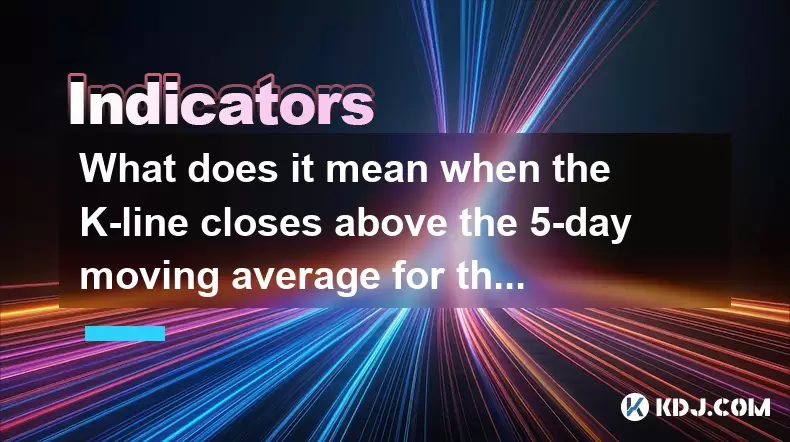
What does it mean when the K-line closes above the 5-day moving average for three consecutive days?
Jul 25,2025 at 10:07pm
Understanding the K-line and 5-day Moving AverageThe K-line, also known as a candlestick, is a critical charting tool used in technical analysis to re...
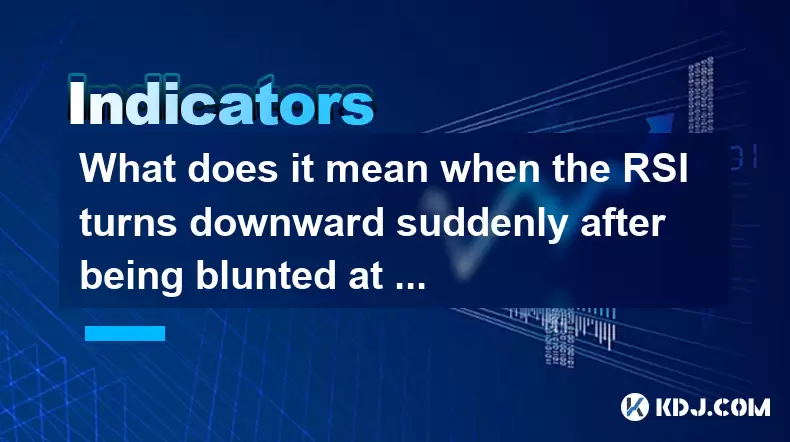
What does it mean when the RSI turns downward suddenly after being blunted at a high level?
Jul 25,2025 at 04:00pm
Understanding the RSI and Its Role in Technical AnalysisThe Relative Strength Index (RSI) is a momentum oscillator that measures the speed and change ...
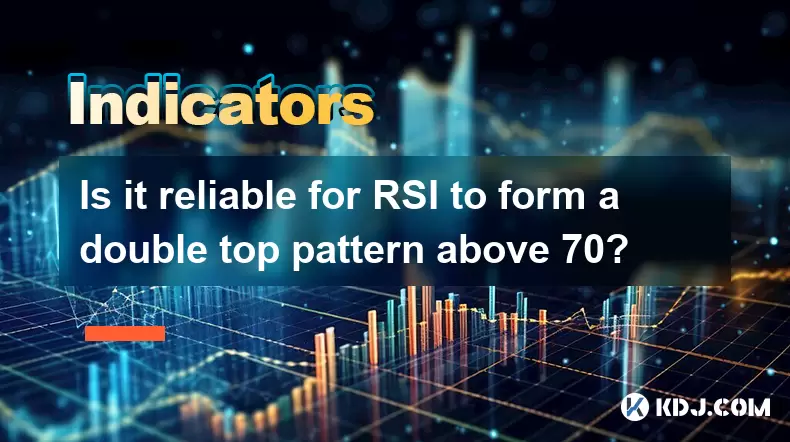
Is it reliable for RSI to form a double top pattern above 70?
Jul 25,2025 at 04:49pm
Understanding the RSI Indicator and Its Role in Technical AnalysisThe Relative Strength Index (RSI) is a momentum oscillator that measures the speed a...

How to interpret that the KDJ D line is downward for a long time but the price is sideways?
Jul 25,2025 at 07:00pm
Understanding the KDJ Indicator and Its ComponentsThe KDJ indicator is a momentum oscillator widely used in cryptocurrency trading to assess overbough...

What does it mean that the KDJ indicator forms a double bottom at a low level?
Jul 25,2025 at 05:08pm
Understanding the KDJ Indicator in Cryptocurrency TradingThe KDJ indicator is a momentum oscillator widely used in cryptocurrency trading to identify ...

What does it mean when the long positive line breaks through the half-year line and then steps back?
Jul 25,2025 at 06:49pm
Understanding the Long Positive Line in Candlestick ChartsIn the world of cryptocurrency trading, candlestick patterns play a vital role in technical ...

What does it mean when the K-line closes above the 5-day moving average for three consecutive days?
Jul 25,2025 at 10:07pm
Understanding the K-line and 5-day Moving AverageThe K-line, also known as a candlestick, is a critical charting tool used in technical analysis to re...

What does it mean when the RSI turns downward suddenly after being blunted at a high level?
Jul 25,2025 at 04:00pm
Understanding the RSI and Its Role in Technical AnalysisThe Relative Strength Index (RSI) is a momentum oscillator that measures the speed and change ...

Is it reliable for RSI to form a double top pattern above 70?
Jul 25,2025 at 04:49pm
Understanding the RSI Indicator and Its Role in Technical AnalysisThe Relative Strength Index (RSI) is a momentum oscillator that measures the speed a...
See all articles

























































































